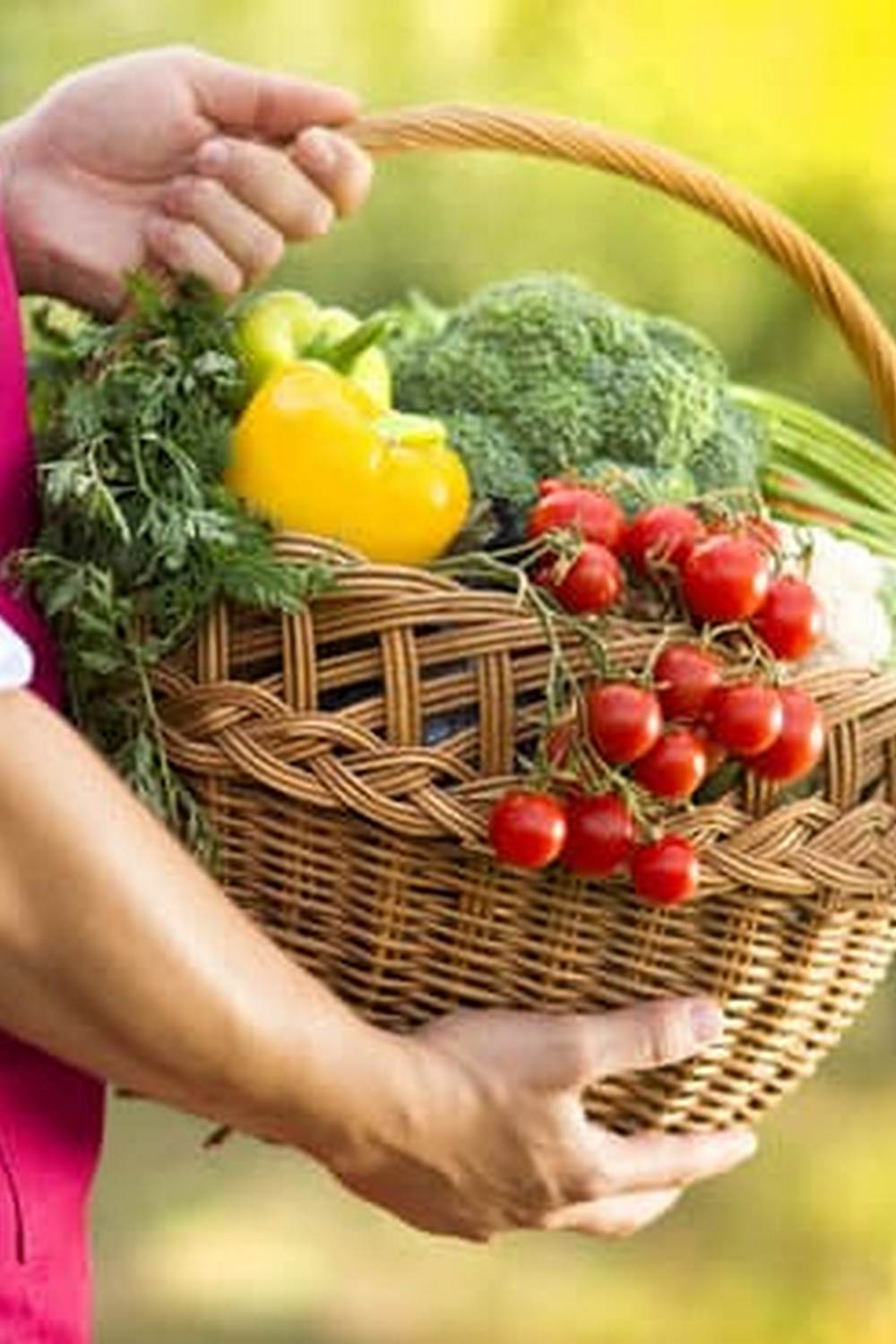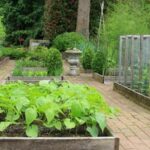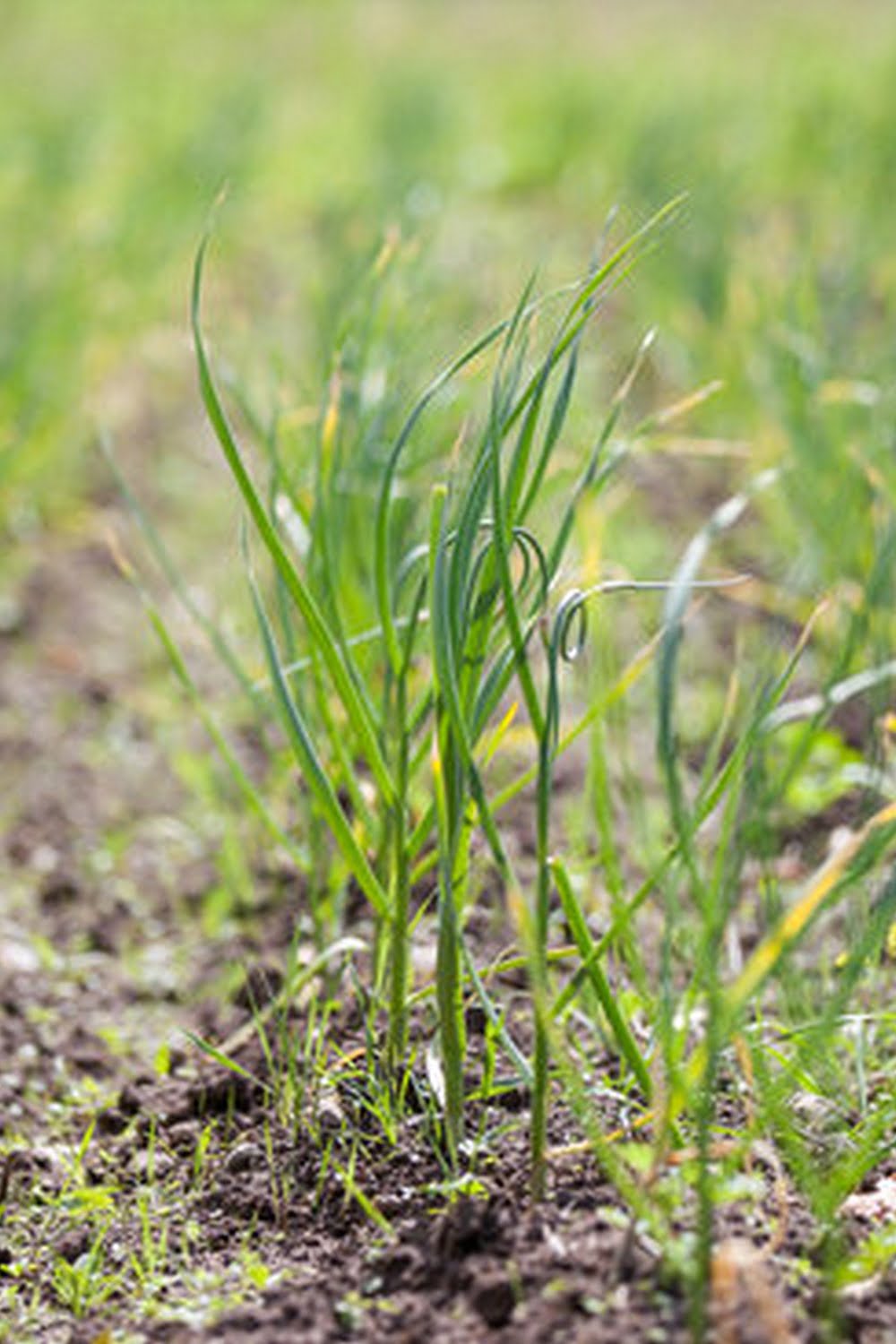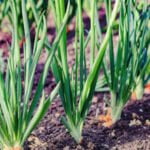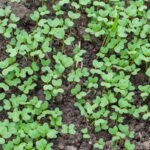Are you looking to bring the joy of gardening into your home, but lack a spacious backyard? Indoor home gardening could be just what you need. With a DIY indoor vegetable garden, you can enjoy the benefits of growing fresh produce right in the comfort of your own home. Whether you are a seasoned gardener or a beginner, indoor gardening offers a convenient and sustainable way to incorporate greenery into your living space.
Indoor vegetable gardens not only provide a source of organic and flavorful vegetables but also contribute to cleaner indoor air and create a peaceful atmosphere. By cultivating your own edible plants indoors, you can reduce your carbon footprint while enjoying the fulfillment of nurturing sustainable food sources. From herbs to leafy greens, there is a wide variety of vegetables that thrive in indoor environments and are perfect for those looking to start their indoor gardening journey.
When embarking on the adventure of setting up an indoor vegetable garden, one must consider factors such as sunlight exposure, temperature regulation, and humidity levels within their home. The key is to choose the ideal spot that receives ample natural light to ensure the healthy growth of your plants. By carefully selecting the right location and following best practices for indoor gardening, you can create a flourishing oasis right inside your own home.
Choosing the Right Location
Temperature and humidity are also essential considerations when choosing the right location for your indoor vegetable garden. Most vegetables prefer temperatures between 65-75 degrees Fahrenheit during the day and slightly cooler temperatures at night. Make sure to place your indoor garden away from drafty areas or heat sources that can affect temperature levels. Additionally, maintaining proper humidity levels, ideally between 40-60%, can help prevent issues such as mold or pests from plaguing your plants.
In addition to sunlight, temperature, and humidity, you should also consider other factors such as access to water and convenience when selecting the location for your indoor vegetable garden. Having easy access to a water source will make watering your plants more manageable, while placing your garden in a convenient spot will encourage you to check on and care for your plants regularly.
By carefully choosing the right location for your indoor vegetable garden, you’ll set yourself up for a successful growing experience and enjoy a bountiful harvest of homegrown produce.
| Factor | Ideal Range |
|---|---|
| Sunlight | 6-8 hours of direct sunlight per day |
| Temperature | 65-75 degrees Fahrenheit during the day |
| Humidity | 40-60% |
Selecting the Right Vegetables
Indoor gardening provides a fantastic opportunity for individuals to grow their vegetables and herbs right in the comfort of their homes. For those looking to start their DIY indoor vegetable garden, selecting the right vegetables is crucial to ensure a successful and fulfilling gardening experience. Some vegetables are better suited for indoor environments due to their adaptability to limited space, lighting conditions, and temperature fluctuations.
One of the best vegetables for beginners in indoor gardening is the humble leafy green – lettuce. Lettuce grows quickly, does not require a lot of space, and can be harvested continuously by simply picking outer leaves as needed.
Another excellent choice is herbs like basil, mint, and parsley, which not only add flavor to your dishes but also thrive in indoor settings with proper sunlight and regular watering. Additionally, cherry tomatoes can also be grown indoors if provided with adequate light and support for climbing.
When deciding on which vegetables to grow indoors, it’s essential to consider your available space, lighting conditions, and personal preferences. By choosing vegetables that are well-suited for indoor environments and beginner-friendly, you’ll set yourself up for a rewarding indoor gardening experience that yields fresh produce right at your fingertips.
| Vegetable | Growth Conditions |
|---|---|
| Lettuce | Fast-growing; thrives in limited space |
| Herbs (Basil, Mint, Parsley) | Require moderate sunlight; regular watering; ideal for flavoring dishes |
| Cherry Tomatoes | Need ample light; support for climbing vines; provide fresh tomatoes indoors |
Containers and Soil
When starting an indoor vegetable garden, one of the key aspects to consider is the containers and soil you will use. The right containers and soil can make a significant difference in the growth and health of your plants. There are various options available for containers, each with its own advantages and considerations.
Container Options
- Pots: Pots are a popular choice for indoor gardening as they come in various sizes, shapes, and materials. They allow for easy mobility and drainage, making them suitable for most indoor spaces. Ensure that your pots have drainage holes to prevent waterlogging, which can lead to root rot.
- Hanging Planters: Hanging planters are a creative way to utilize vertical space in your home. They not only provide a unique aesthetic appeal but also keep your plants out of reach from curious pets or children. When choosing hanging planters, make sure they have proper drainage to avoid overwatering.
- Grow Bags: Grow bags have become increasingly popular due to their affordability and versatility. These fabric containers promote air circulation to the roots, preventing issues like waterlogging. They are lightweight and easy to move around, making them a convenient option for indoor gardening.
Soil Mixtures
The type of soil you use plays a crucial role in the success of your indoor vegetable garden. Opt for a well-draining mix that provides adequate nutrients for your plants. Consider mixing organic potting soil with perlite or vermiculite to ensure good drainage while retaining moisture. Avoid using garden soil as it may contain pests or diseases that can harm your plants.
By selecting the right containers and soil mixtures for your DIY indoor vegetable garden, you are setting the foundation for healthy and thriving plants. Experiment with different options to find what works best for your space and specific vegetables. Remember to monitor moisture levels regularly and adjust as needed to maintain optimal growing conditions for your indoor garden.
Watering and Fertilizing
Indoor vegetable gardening requires proper watering and fertilizing to ensure that plants thrive in a controlled indoor environment. Here are some tips on how to effectively manage these crucial aspects of maintaining a successful DIY indoor vegetable garden:
- Watering:
- Fertilizing:
Determining the right watering schedule is essential for indoor home gardening. Overwatering can lead to root rot, while underwatering can cause plants to wilt and die. It’s recommended to check the moisture level of the soil before watering by sticking your finger into the soil up to the first knuckle. If it feels dry, it’s time to water. Make sure not to let the soil dry out completely between watering sessions.
Indoor plants require regular feeding since they cannot access nutrients from natural sources like outdoor garden beds. Choose a balanced liquid fertilizer specifically designed for vegetables and follow the instructions on the packaging for dilution and frequency of application. It’s advisable not to over-fertilize, as this can also harm your plants.
Properly monitoring the moisture levels and nutrient needs of your indoor vegetable garden is crucial for maintaining healthy and robust plants that produce bountiful harvests. By following these tips on watering and fertilizing, you’ll be well on your way to enjoying a thriving indoor garden filled with delicious homegrown vegetables.
Remember that each plant may have specific watering requirements, so it’s essential to research individual vegetable species you’re growing in your indoor garden. With attention to detail and consistent care, you’ll soon be reaping the rewards of your efforts with an abundant supply of fresh, nutritious produce right at your fingertips.
Maintenance and Care
When embarking on your indoor vegetable garden journey, it’s essential to understand the necessary maintenance tasks required to ensure the health and vitality of your plants. Proper care and attention will not only help your vegetables thrive but also prevent common issues that may arise in indoor gardening. Here are some key maintenance tasks and tips to keep your DIY indoor vegetable garden flourishing:
- Pruning: Regular pruning is crucial for promoting growth, improving air circulation, and preventing overcrowding in your indoor garden. Trim off any dead or yellowing leaves, as well as leggy stems to encourage new growth.
- Checking for Pests: Keep an eye out for common pests like aphids, spider mites, and whiteflies that can wreak havoc on your indoor vegetable plants. Inspect the leaves and stems regularly for any signs of infestation and take prompt action to address the issue.
- Providing Adequate Support for Climbing Plants: If you’re growing climbing vegetables like tomatoes or beans in your indoor garden, make sure to provide them with proper support structures. Use trellises, stakes, or cages to help them grow vertically and avoid sprawling all over your space.
Taking these maintenance tasks seriously will not only benefit the overall health of your indoor vegetable garden but also give you a sense of fulfillment as you watch your plants flourish under your care. Remember that each plant may have specific needs, so it’s important to observe individual requirements based on their variety and growth patterns.
Remember that prevention is always better than cure when it comes to maintaining a healthy indoor garden. By staying proactive with pruning, pest control, and providing adequate support for climbing plants, you can enjoy a thriving DIY indoor vegetable garden all year round.
Don’t hesitate to seek resources such as online forums or local gardening centers for additional guidance if you encounter any challenges along the way. Your dedication will undoubtedly pay off with bountiful harvests of fresh, homegrown produce right at your fingertips.
Harvesting and Enjoying
When to Harvest
Knowing when to harvest your indoor vegetables is crucial for enjoying them at their peak flavor and nutrition. Different vegetables have varying signs that indicate they are ready to be harvested.
For example, leafy greens like spinach and lettuce can be harvested when the leaves are big enough to eat, while root vegetables like carrots and beets should be pulled when they reach a desirable size. It is important to regularly check your plants for readiness to ensure you harvest them at the right time.
How to Harvest
The method of harvesting indoor vegetables depends on the type of plant you are growing. For leafy greens, simply snip off outer leaves as needed, allowing the center to continue growing. Root vegetables require gently pulling them out of the soil without damaging the roots.
Vining plants such as tomatoes may need support for their fruits as they grow and ripen. By harvesting properly, you not only encourage more growth but also maintain the health of your plants for continued production.
Recipe Ideas
One of the most rewarding aspects of indoor home gardening is being able to enjoy fresh produce right from your own home. Whether you are growing herbs, tomatoes, peppers, or cucumbers, incorporating them into your meals can elevate the flavors and add nutritional value. Consider making a colorful salad with freshly picked greens and cherry tomatoes or whipping up a flavorful pasta sauce using homegrown herbs and peppers.
The possibilities are endless when it comes to cooking with your indoor garden bounty. Experiment with different recipes to fully appreciate the taste of your DIY indoor vegetable garden harvest.
Troubleshooting Common Issues
In conclusion, while indoor home gardening and DIY indoor vegetable gardens offer numerous benefits, it is essential to be prepared for common issues that may arise along the way. From dealing with yellowing leaves to wilting plants and pest infestations, troubleshooting these challenges can help ensure the success of your indoor garden.
One of the most common problems indoor gardeners face is yellowing leaves, which can be a sign of nutrient deficiencies or overwatering. To address this issue, it is important to assess the soil’s nutrient levels and adjust your watering schedule accordingly. Adding a balanced fertilizer or adjusting the pH level of the soil can also help revive your plants and prevent further leaf discoloration.
Furthermore, wilting plants can indicate underwatering or root rot caused by overwatering. To prevent wilting, make sure to check the moisture levels in the soil regularly and water your plants accordingly. Additionally, inspect the roots for any signs of rot and consider repotting them in fresh soil if necessary. By maintaining proper watering practices and ensuring good drainage, you can help your indoor vegetable garden thrive.
Lastly, pest infestations such as aphids or spider mites can wreak havoc on your indoor plants if left unchecked. To combat these pests, try using natural remedies like neem oil or insecticidal soaps to deter them from spreading.
Regularly inspecting your plants for any signs of pests and taking prompt action can help protect your indoor vegetable garden from damage. Remember that patience and dedication are key when troubleshooting common issues in indoor gardening, but with perseverance, you can enjoy a flourishing DIY indoor vegetable garden all year round.
Frequently Asked Questions
How Do You Make an Indoor Vegetable Garden?
Creating an indoor vegetable garden involves choosing the right location with adequate sunlight, selecting suitable containers or pots, using high-quality potting soil, and picking the right vegetables for indoor cultivation. Regular watering, proper drainage, and periodic fertilization are also essential to ensure healthy growth.
Is It Cheaper to Grow Your Own Vegetables Indoors?
Growing your own vegetables indoors can be cost-effective in the long run, as you save money on buying produce from the store regularly. While there may be upfront costs for supplies like containers, soil, seeds, and grow lights, the amount saved over time by harvesting your fresh vegetables can outweigh these initial expenses.
What Do I Need to Start Growing Vegetables Indoors?
To start growing vegetables indoors, you’ll need a sunny spot near a window or invest in quality grow lights to provide sufficient light for plant growth. Choose appropriate containers with drainage holes to avoid waterlogging and use a well-draining potting mix to foster healthy root development.
Additionally, select vegetable varieties that thrive indoors such as herbs, microgreens, salad greens, dwarf tomatoes or peppers. Regular watering and feeding with a balanced fertilizer will also help your indoor vegetable garden flourish.

If you’re looking to get into vegetable gardening, or are just looking for some tips on how to make your current garden better, then you’ve come to the right place! My name is Ethel and I have been gardening for years. In this blog, I’m going to share with you some of my best tips on how to create a successful vegetable garden.

